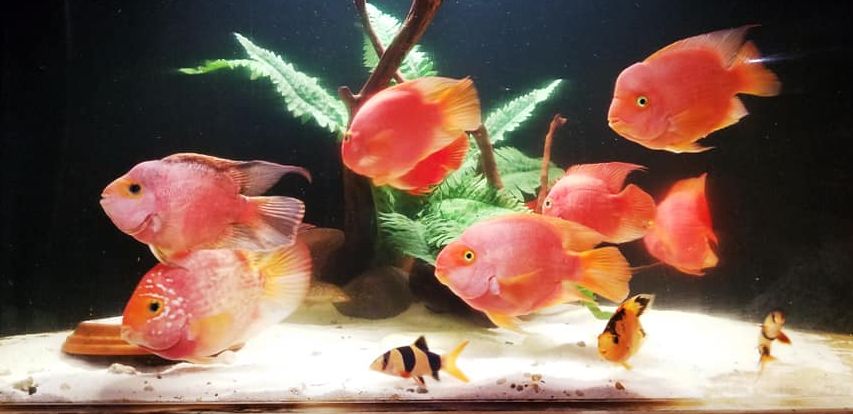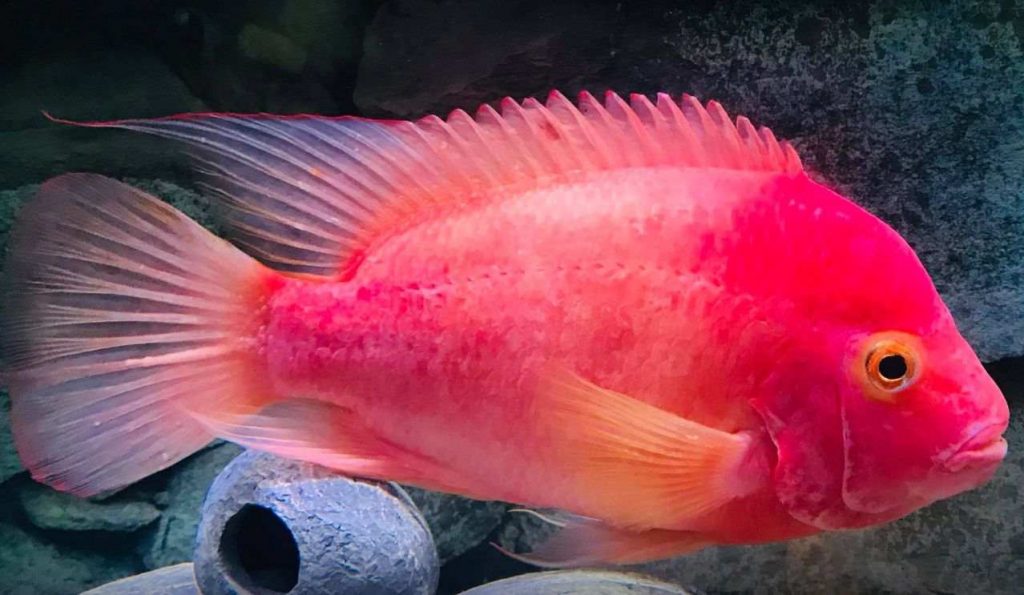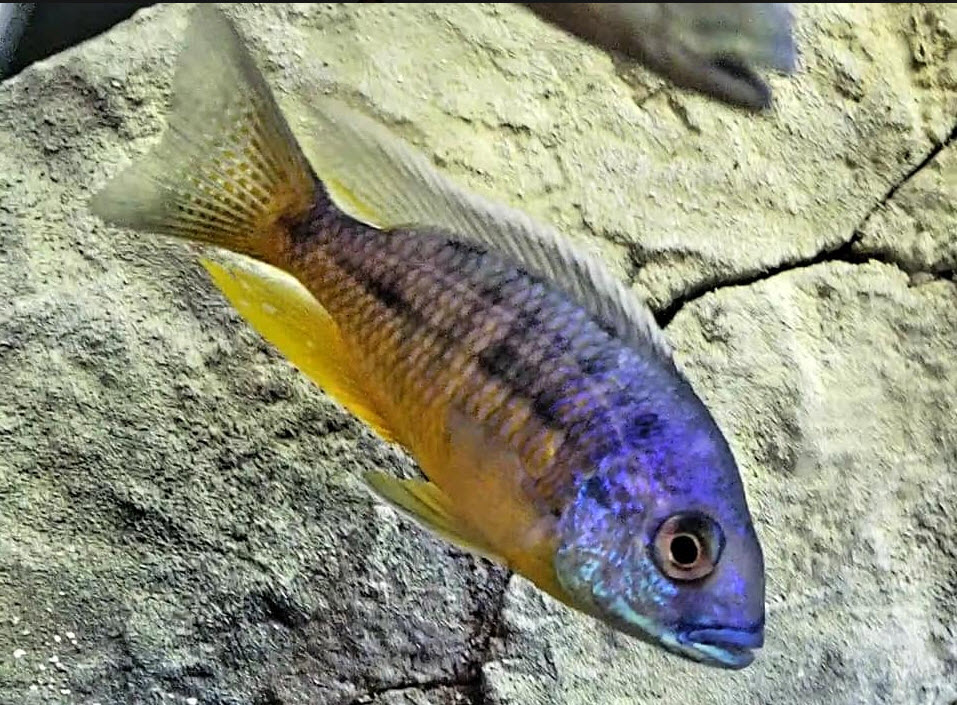
Most water supplies in the developed world have either chlorine or chloramine in them to kill bacteria and prevent disease outbreaks. This chlorine and chloramine need to be neutralized before it gets to the gills of a fish as it is very toxic to the fish. This is done with something called a “conditioner”. All conditioners work with both chlorine and chloramine.
My recommendation with conditioners is simple:
.
Buy ONLY Conditioners that say “Sodium Thiosulfate” on the Bottle in the Ingredients List. Then use 5X the Recommended Dosage.
.
When I used to have chlorinated water for a 50 gallon tank 50% water change I would take the amount of thiosulfate conditioner which would, per the bottle, condition 25×5 or 125 gallons of water and add it to the 25 gallons that was left in the aquarium after draining. Thiosulfate is just very harmless, even at a 10x concentration. Then I would refill the tank with water above 70 degrees. Easy.
And this is not rocket science. Anything from a 2X to a 10X dosage is just fine. Just do not leave fish sit in chlorinated water for any length of time. Both chlorine and chloramine are very bad for fish, even for just a few minutes.

Points to Remember About Conditioners
The subject of conditioners is quite complex and best left to the chemists. But there are a few salient points:
- All conditioners neutralize roughly 1 to 2 ppm of chlorine or chloramine in a water supply.
- All conditioners do ABSOLUTELY NOTHING to ammonia, nitrite or nitrate. This is ALL marketing hype. There are NO exceptions to this point. NONE!!! The articles below have a whole series of scientific tests which prove these products do not do what they say. Others have replicated these tests and come to the same conclusion.
If the conditioner bottle says on the bottle that its ingredient is sodium thiosulfate, then these two points are the only important points. If the bottle does not say sodium thiosulfate then some other points are important:
- Never use more than five times the level recommended
- Never use with a formalin based medication such as Ich-X
This is because most of these “mystery ingredient” conditioners have formalin to stabilize the conditioner. This can result in an overdose of formalin in the tank. Because of these limitations I do not recommend using anything but conditioners which state on their bottle they are sodium thiosulfate.

How to Use Conditioners
Note that the thiosulfate chlorine remover should be added to the water in a bucket or some such container, stirred and allowed to work for a few minutes before it is added to the aquarium. When a reaction is working on a level of one to two parts per million it takes a few minutes for every atom of the chlorine or chloramine to be found by the neutralizer.
But note that the effect is slight. Conditioner also removes the pink color of potassium permanganate. If one adds conditioner to this pink water the speed with which the pink color is removed is pretty fast.
Many hobbyists avoid adding the water to the fish aquarium and then adding the neutralizer. Chlorine and chloramine are just very bad actors for fish. But many very experienced hobbyists add water this way. If using buckets it is easy just add the chlorine neutralizer to each water change in the buckets for the water change, before putting the water in the aquarium. If one fills with a hose or a Python one has to add the neutralizer to the half drained aquarium before adding the water-change water.
More about that under this link:
5.5. Chlorine and Chloramine
The only problem with sodium thiosulfate products is that some of these products claim to neutralize the ammonia in chloramine, they don’t do that!

Products Other than Conditioners
Note that many other products claim to be beneficial when added to new water or water for water changes. These products are all marketing scams which need to be avoided unless you have money to burn. These “snake oils” are generally of two categories:
The first category is the “Bacteria-in-a-bottle” products, like Seachem Stability and the various “zyme” products. These products do not work. Here is a test debunking these items:
2.8. Bacteria-in-a-bottle
Secondly there are the “Stress Coat” type products. Some of these products have some form of conditioner in them which will neutralize chlorine. But one of these products, API StressCoat Natural, Pond and Marine, claims to neutralize chlorine with aloe vera alone. It cannot neutralize chlorine and several Facebook group posts have had whole tanks killed by using this product as a chlorine conditioner.
Aloe vera is used in “stress coat” products (API StressCoat, Microbe-Lift Aquatic Stress Relief) supposedly to aid in fish diseases and after a water change to sooth the fish. Aloe vera coats the gills of the fish and interferes with oxygen exchange. It also rapidly depolymerizes, forming sugar in the aquarium water column. This sugar will give a bacterial outbreaks in the water column. This bacterial outbreak will kill fish. I do not recommend using these products.
More about stress coat products can be found at this link:
5.5.4. Stress Coat Products

Ascorbic Acid
Some use is made of ascorbic acid as a cheap remover of chlorine in chlorinated waste steams dumped into rivers and the like. Ascorbic Acid is a mild reducing agent so it will remove chlorine from the water. But it is an organic compound which is a food source for bacteria in the water column. And bacteria in the water column are always bad for a fish’s health. We do not recommend its use.
Homemade Conditioner
Note the cheapest conditioner can be made by dissolving 32 grams of sodium thiosulfate in one cup of water (tap water is fine). You don’t want to mix up too much as the solution does go bad with time (like two years time). Add one teaspoon of the solution per 50 gallons of the water to be treated. Since there are 100 drops in a teaspoon, this is a rate of two drops per gallon. To go to the 5x simply go to five teaspoons per fifty gallons, ten drops per gallon.
The metric equivalent is 34 grams sodium thiosulfate in 250 grams of water. Add five milliliters solution per 200 liters of water to be treated (half a drop per liter). To go to 5x simply add 25 milliliters solution per 200 liters of water to be treated.
Do not add the crystals of sodium thiosulfate directly to the aquarium. During the time it takes for the thiosulfate crystals to dissolve the fish will be exposed to chlorine. And ANY exposure of the fish to chlorine is to be avoided.
Further Reading
There are some aquarium hobbyists who are interested in delving deep into the science and the calculations behind all aspects of the hobby. For those who are so inclined the following is pertinent:
5.5.3.1. “Ammonia Detoxifying” Claims
5.5.3.2. Seachem Prime and Safe
5.5.3.3. Water Conditioner Chemistry
5.5.3.4. Water Conditioner Cost
5.5.3.5. Water Conditioner Testing
5.5.3.6. Review Of Water Conditioners
.
Return to Poisons Menu
.
Aquarium Science Website
The chapters shown below or on the right side in maroon lead to close to 400 articles on all aspects of keeping a freshwater aquarium. These articles have NO links to profit making sites and are thus unbiased in their recommendations, unlike all the for-profit sites you will find with Google. Bookmark and browse!
.

Dave says
In reply to Susan ….. You are off by a factor of 1,000. 14 milligrams of thiosulfate (2.8 x 5) is about one grain of rice in size and should neutralize one part per million of chlorine in five gallons of water. I heartily recommend you mix up a solution of thiosulfate per the directions in this article and use that solution. It is a lot more accurate.
Susan says
Hello Dave
I’ve purchased (Sodium Thiosulfate Pentahydrate Crystals)
This is the instructions that are given:
Small amounts: Approx. -2.8mg of sodium thiosulfate will neutralize 1 part-per-million (PPM) of chlorine or bromine, in 1 gallon of water.
*******************************
After reading your chapter on this I need to know if I did this correct.
I measured out 1tbps of the crystal and added it to a 5gallon bucket of water to put in the aquarium.
Thanks Susan
Dave says
Adam Your anlayais is correct. Technically you add according to the amount of new water. But note I recommend 5 times the amount calculated in order to cover chlorine pulses.
Adam says
Dave,
Short version: If adding tap water directly to an aquarium (rather than pre-treating new water first) does one calculate the Sodium Thiosulphate amount based only on the volume of new water OR for the full volume of the tank?
Longer version if needed for clarification:
I use a python to add (chloraminated) water directly from my tap to my aquaria. Sub-optimal, I know, but it saves a lot of time with a lot of tanks.
With that system Seachem advises to add Prime calculated for the full volume of the tank, regardless of the % water change. That never made sense to me. I kinda figured it was just another of their ways to get customers to use more product. That checks with how they seem to operate anyway.
Am I right in thinking that if adding Sodium Thiosulphate to aquarium before adding new water then one calculates the dosage based only on the volume of new water, rather than on the full volume of the tank?
For example:
– if one has your suggested solution of 34 grams of sodium thiosulphate in 250ml of water
– for a 50% water change of a 200L tank (ie 100L of new water) for a 5x treatment one should add 12.5ml Sodium Thiosulphate to the aquarium before adding the new water…?
Hope that makes sense. Thank you again.
Dave says
In reply to Luke …. My calculations (found under “cost of water conditioners”) used the pentahydrate to get the 34 grams figure. I’ve never seen or heard of sodium thiosulfate in anything save the pentahydrate form. So no need to adjust anything.
Dave says
In reply to Luke ….. My calculations for sodium thiosulfate (found in the chapter on cost of water conditioners) actually used the pentahydrate form. I have not run across any sodium thiosulfate which isn’t in the pentahydrate form. So the 34 grams is accurate for the pentahydrate form.
Adam says
Dave ,
I actually have the exact same questions as Luke (I’m also an Aussie). Can I use sodium thiosulfate pentahydrate instead? If so, do I need to alter the dosage? The local water (Brisbane @Luke) typically has about 4ppm chloramine. Amusingly the ever reliable seachem insists this is ‘unheard of”.
For the *very* little it is worth Luke, chatgpt had this to say:
Yes, sodium thiosulfate pentahydrate is essentially the same chemical as sodium thiosulfate, but in a hydrated form. The pentahydrate form contains five water molecules for each sodium thiosulfate molecule. This added water makes it heavier per mole compared to the anhydrous (dry) form.
The key difference is that you’ll need to adjust the dosage if you’re using sodium thiosulfate pentahydrate instead of the anhydrous form. Because of the extra water content, you’ll need to use more sodium thiosulfate pentahydrate by weight to achieve the same amount of active sodium thiosulfate.
To account for the difference:
Sodium thiosulfate pentahydrate has a molecular weight of ~248 g/mol.
Anhydrous sodium thiosulfate has a molecular weight of ~158 g/mol.
So, you would need approximately 1.57 times more sodium thiosulfate pentahydrate to match the effectiveness of anhydrous sodium thiosulfate in neutralizing chloramine.
If your dosage is based on anhydrous sodium thiosulfate, multiply it by 1.57 to find the equivalent dose for the pentahydrate form.
===
Please note I am no scientist and have absolutely no idea if the info above is accurate. Chatgpt is extremely fallible. Please do not take it as gospel unless parsed by someone who knows what they’re on about.
*IF* it is accurate then to mimic Dave’s concoction above one would add 53.38 grams (34×1.57) sodium thiosulfate pentahydrate in 250 grams of water.
Luke says
Hi Dave!
Was thinking of trying out the DIY conditioner with sodium thiosulphate. My local chemical supplier (I’m in Australia so it seems like I have fewer options getting a lot of this stuff) only has ‘Sodium Thiosulphate Pentahydrate’.
Would the amount I need to mix into the water be different since I assume the pentahydrate version weighs for the same amount of active ingredient more because of the added water? How can I do the maths to adjust for this?
Cheers,
Luke
Dave says
In reply to Maiev ….. Ascorbic acid in high doses will remove chloramine. But why use a marginally effective product when there is a much better product (sodium thiosulfate) available. It is safer and MUCH more effective.
Maiev says
Hi. Do you have any information as to whether chloramines are also removed by Ascorbic Acid / Vitamin C, or only chlorine? Some hullabaloo is made about it not doing so, but it’s hard to pare much sense out of the debate around it and study seems scarce.
Dave says
In reply to Brad ….. ALL conditioners, and I do mean ALL, do exactly the same thing to chloramine. They break the bond between the chlorine and the ammonia, neutralize the chlorine and they leave the ammonia at the level it was in the chloramine. ALL conditioners do this NO EXCEPTIONS
Brad - UK says
Hi Dave,
In terms of Sodium Thiosulfate based Water Conditioners, I have read that they dont actually break down chloramines, but decode the bonding with amonia. This means that it can raise ammonia, as far as I understand with my limited knowledge of chemistry!
What’s your experience here? is the Sodium Thiosulfate WC’s likely to increase ammonia levels with water that contains chloramines?
Thanks,
Brad
Anonymous says
@Eve Taylor
You only dose for the water you are changing (assuming the current water is chlorine/chloramine free).
You do not dose every day.
Eve Taylor says
Arghhhh
Dave, I have a very basic question: Whether using sodium dithionate or sodium thiosulfate do you dose the tank every 48 hours? Have I been doing it wrong for years? I use Prime almost daily (10 drops per 10 gal. tank) because I was under the assumption that chlorine, or chloramine was only “bound” for 48 hours.
I’m going to switch to a sodium thiosulfate conitioner – how often do I use it?
Thanks!
Jason says
Jack, that dosage doesn’t seem right to me.
Dave’s recommendation is 34 grams of sodium thiosulfate in 250ml of water. That’s at the 1x solution. So if you were making up a 1x solution in 50ml batches, that would be 6.8gms of sodium thiosulfate per 50 water.
Dave says
In reply to Jack …. Sounds about right to me.
Jack says
Thanks Dave, so next question, (more to double check my working…) If I make up the solution every water change, I could add 1.7g of Sodium Thiosulfate to 50ml of water which would give me a dosage of 5ml for every 10l tap-water (a total of 100l of conditioned water from 1.7g of S. Thiosulfate).
I made it slightly less concentrated as this makes it easier to measure out, I’m also European so metric makes more sense to me!
Cheers
Dave says
Jack … No the dosage of the homemade is only a 1x. I have clarified that in the wording.
Jack says
Hi Dave, does the homemade conditioner dosage already account for the 5x the recommended dose advice?
Thanks
ben z says
@Dave
About the “weekly replacement” of sodium thiosulfate solution… that info appears to be solid in the context of laboratory testing. Just ran across something similar in the 24th edition of the Standard Methods, pg 425 (the section is about the preparation of reagents for ammonia testing):
“Dissolve 3.5 g sodium thiosulfate in water and dilute to 1L. Prepare fresh weekly. Use 1 mL reagent to remove 1 mg/L residual chlorine in 500-mL sample.”
Of coz, how applicable that might be to aquariums is another question altogether.
Newbfish says
Does the type of water used to make the diy water conditioner matter?
Why can’t pne just add the sodium thiosulfate crystals right to the tank?
Dave says
In reply to Ben z …. Never seen any references that say that thiosulfate decomposes that fast. I’ve done testing with homemade thiosulfate water conditioner that was months old and it was fine. Two MSDS sheets for sodium thiosulfate solution say it is “Stable at normal ambient temperatures”. So I suspect that researcher is just plain wrong.
Ben z says
I ran across an old USGS document on testing BOD5, and among the instructions for preparing the needed chemicals, they included mixing sodium thiosulfate in DI water to prepare a dechlorinator (for preparing samples). Interestingly, they noted that the solution had to be discarded weekly since the thiosulfate would decompose and become ineffective. Out of curiosity, how do the commercial dechlorinators prevent this, since they have a long shelf life?